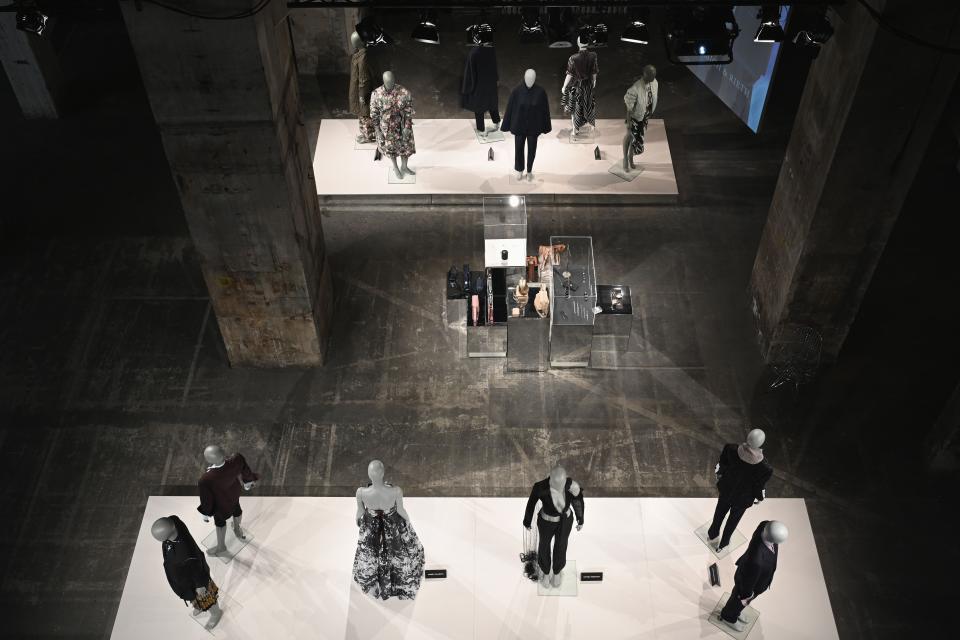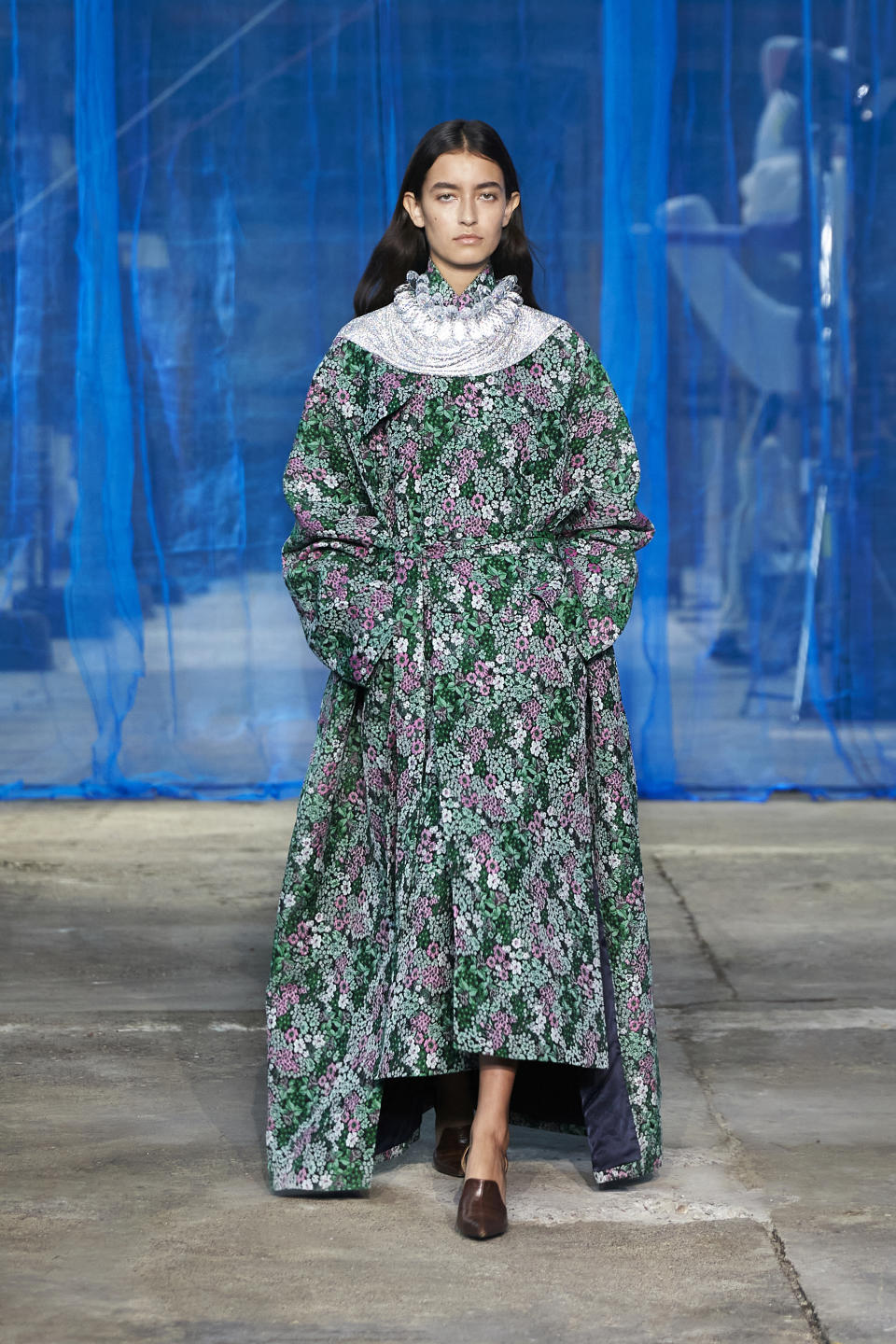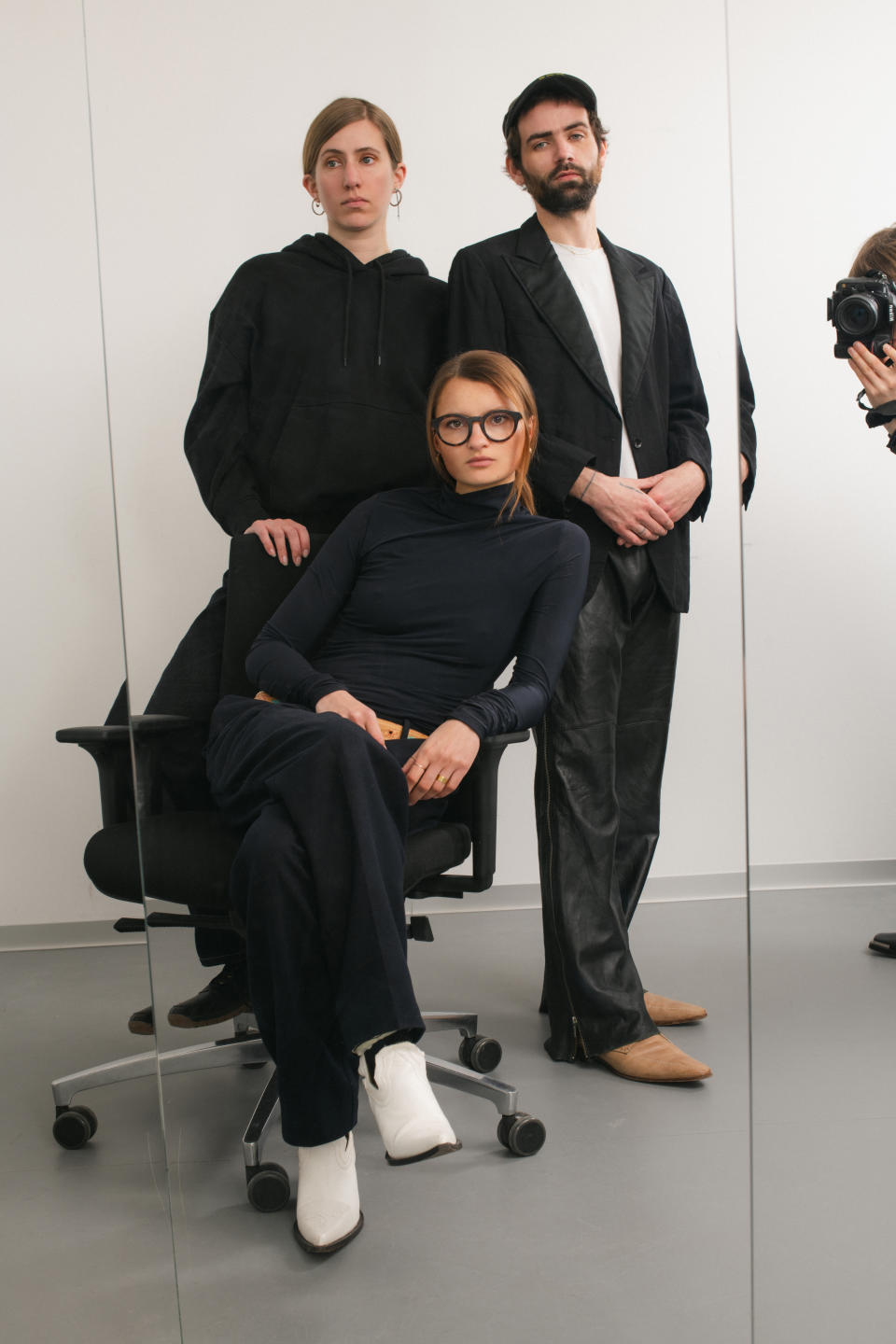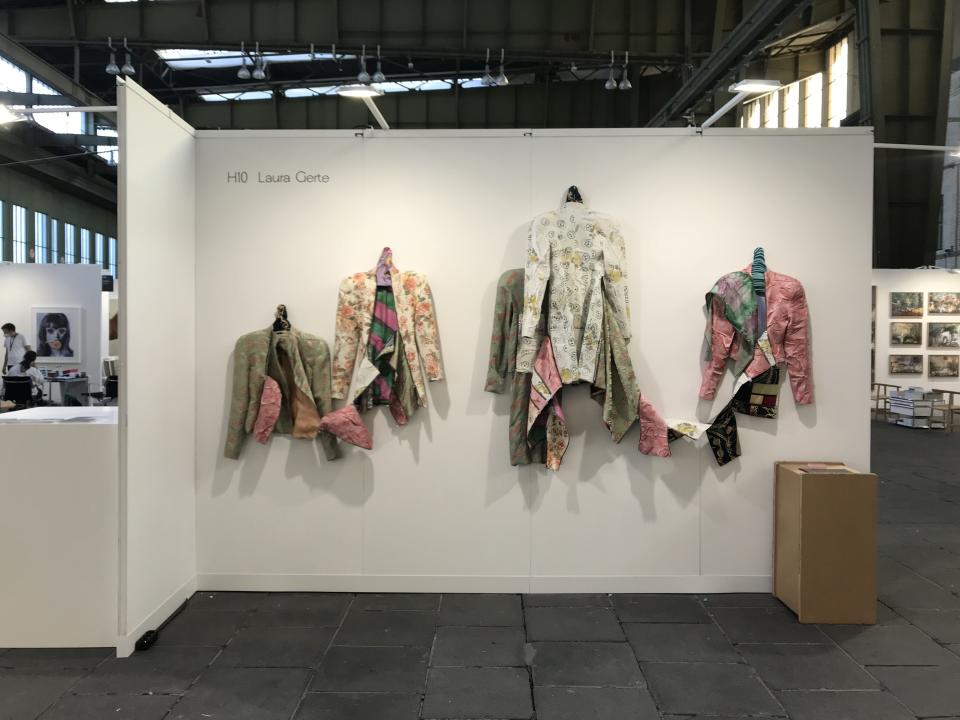Berlin Fashion Week Reboots With Physical Events, Minus Trade Shows

BERLIN — Berlin Fashion Week’s physical reboot took participants from a derelict building resembling a Chupa Chups in the very south of the city to a newly launched creative hub in the industrial era high up north. And it suggested that the German capital found a way forward without trade shows.
The pandemic wasn’t the only mayhem to hit the German fashion industry last year. When some of the big trade fairs — including Premium, Seek and Neonyt — announced they would leave Berlin to launch a new fashion week in Germany’s financial hub Frankfurt last summer, some fashion players saw doom for Berlin Fashion Week.
More from WWD
But the first physical edition during the pandemic allowed Berlin to play on its creative strengths. The trade fairs had previously dictated the inconvenient scheduling in January and July, often overlapping with Paris men’s and the couture shows, thus preventing an international public from attending.
Free from the fairs, Berlin Fashion Week was scheduled from Sept. 6 to 12, between Berlin Photo Week, the international literature festival and Berlin Art Week, to potentially benefit from new audiences and convergence with other disciplines. Some 13 different formats centered on business-to-consumer dialogue. This time, the traditionally hard-to-navigate, convoluted schedule turned out to be the ideal set-up to for myriad niche proposals.
“There’s more space to develop new things and become an exciting new hub. Throughout the week, there were 13 formats, many of which were new, so there’s quite a chance to have something exciting. In the past, we didn’t have the right profile in the city, but now that neither dates nor content is colliding, Berlin could actually become a hub for emerging talents,” said Marcus Kurz, a board member of the Fashion Council Germany and co-initiator of Berliner Salon, along with former Vogue editor in chief Christiane Arp, that kicked off the week at Mercedes-Benz Fashion Week’s venue Kraftwerk Berlin.

Getty Images for MBFW
The salon established itself as the go-to showcase for German design over the past seasons and presented 35 designers dedicated to sustainable conduct, transparency and circularity, among others brands like artisanal jeweler Anna Auras, handbag label Lutz Morris and Rianna + Nina, a clothing brand that revamps vintage luxury materials.
“I have made pivotal contacts to media outlets and retailers through the Berliner Salon, and it felt really good to be here after the time of isolation. For me, it’s the most important platform for German designers,” said Gisa Golpira, who launched her Düsseldorf- and Berlin-based sustainable jewelry label Golpira at the showcase in 2014 and is stocked in stores in Paris, Tokyo and New York, including Bergdorf Goodman.
Simultaneously, Fashion Council Germany launched the senate-sponsored retail pop-up Studio2Retail at the soon-to-open department store Alhambra with 29 local designers. “Since I have started shortly before the pandemic and mainly operated online up until now, it was a great experience to be in direct contact with customers and exchange ideas with other people from the industry,” said participant Janina Waschkowski of Nove, a premium label with an elegantly tailored collection made for women throughout and after pregnancy.
Besides fixtures like Danny Reinke, Kilian Kerner and Marc Cain, Mercedes-Benz Fashion Week saw the debut collection of Austrian designer Florentina Leitner, the runway premier of Hamburg-based label Fassbender, and LML Studio — a highlight of the week.
Lucas Meyer-Leclère of LML Studio presented a collection of 33 unique looks of reconstructed Berluti, Dior Homme, Hermès and vintage garments that he dubs “re-tailored luxury.” The looks had the aesthetics of bourgeois fabrics ripped open to reveal the bones of the tailoring, finished off with some painting on top. The Central Saint Martins graduate was a creative assistant to Chanel’s head of textile and a textile designer at ISA in Milan and London before moving to Berlin to work with artists. There, he started making clothes for himself again.
“I had all these luxury clothes that wouldn’t fit into this city any more and cut them out and turned them around, also, because it makes absolutely no sense to me to have the same everywhere in the world, no matter whether you are in Tokyo or Paris,” he said. The label quickly gained attention — the late Stella Tennant was the first to wear a LML Studio jacket after she spotted Meyer-Leclère at a Chanel couture show. The young designer already works with diverse collaborators including Berlin vintage store Halleluja, London-based bespoke shirtmaker Budd, and designers like Stefano Pilati and Dumitrascu.
However, he is not intent on producing conventional collections, but rather wishes to share the craft: “Skills are meant to be shared and ideas are meant to be stolen and distorted. Not everybody can afford luxury garments, but everybody can take a pair of scissors. I want to show others how to do it with my shows and presentations,” he told WWD.

Julian Wiesemes
William Fan’s show was staged at Wilhelm Hallen, a new creative hub initiated by Canadian-German design manufacturer Bocci in the northern periphery of Berlin. Between the bones of the 19-century iron foundry and art work by Sylvie Fleury and Julius von Bismarck installed for Berlin Art Week, Fan presented a joyful collection of sharply tailored classic suits, coats and dresses in shades of blue and beige, juxtaposed with eveningwear with rich sequins, floral brocade and psychedelic prints — a balance of “what we need and what we desire,” according to the designer.
Another spark from the periphery came from Reference Festival that occupied a derelict pop-architect building called Bierpinsel from the 1970s. The two-day festival, which was open to the public, was co-curated by DJ Bill Kouligas and his record label PAN and art space Schinkel Pavillon. The main program featured music and art installations, a runway show by Richert Beil and contributions by labels Rudi Gernreich, Phipps and Carhartt WIP.
Highsnobiety launched the Berlin, Berlin Prize, awarded to Kasia Kucharska, a graduate of the city’s University of the Arts.

Laura Schaeffer
Wrapping up the week, Fashion Positions at the former Bread & Butter trade show venue Tempelhof bridged Fashion Week and Art Week. Initiated by the Position Art Fair’s director Kristian Jarmuschek and designers Mira von der Osten of Cruba and Olaf Kranz of Brachmann, the fashion group presentation within the art fair combined art and fashion to draw the art audience and sell the designers’ collections at the art fair. Besides well-known German names like Esther Perbandt, Lou de Bètoly and Uncommon Matters, Fashion Positions also puts a spotlight on newcomers with its own award. Last year’s laureate Laura Gerte, a graduate of Kunsthochschule Weißensee, presented a noteworthy collection designed in collaboration with Berlin-based party collective Multisex that was made with manipulated vintage interior fabrics and printed jersey to reflect the aesthetics of the local underground party scene.

Laura Gerte
Best of WWD
Sign up for WWD's Newsletter. For the latest news, follow us on Twitter, Facebook, and Instagram.

